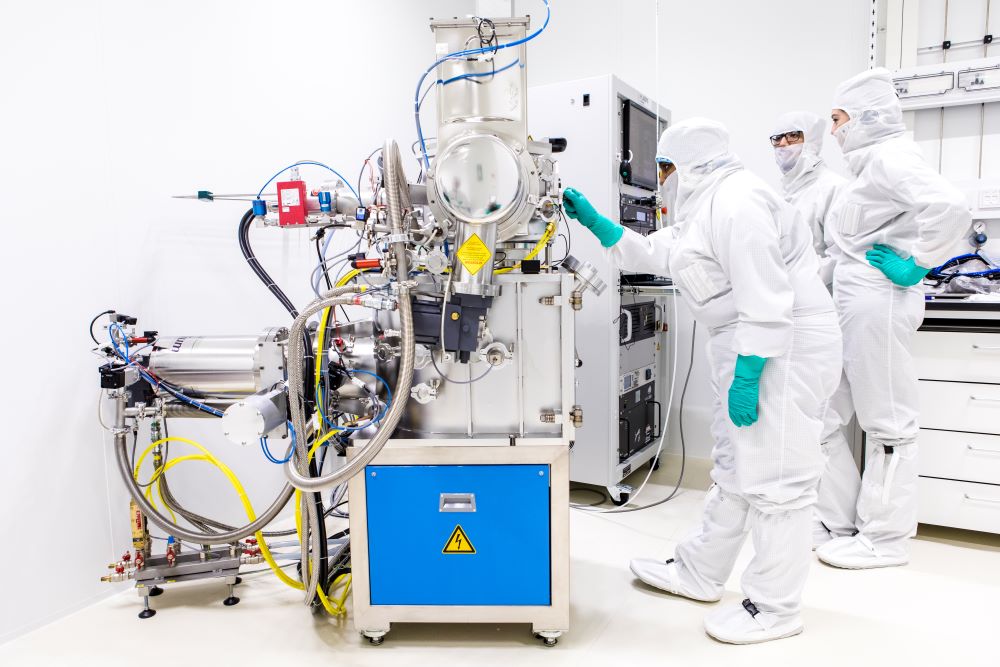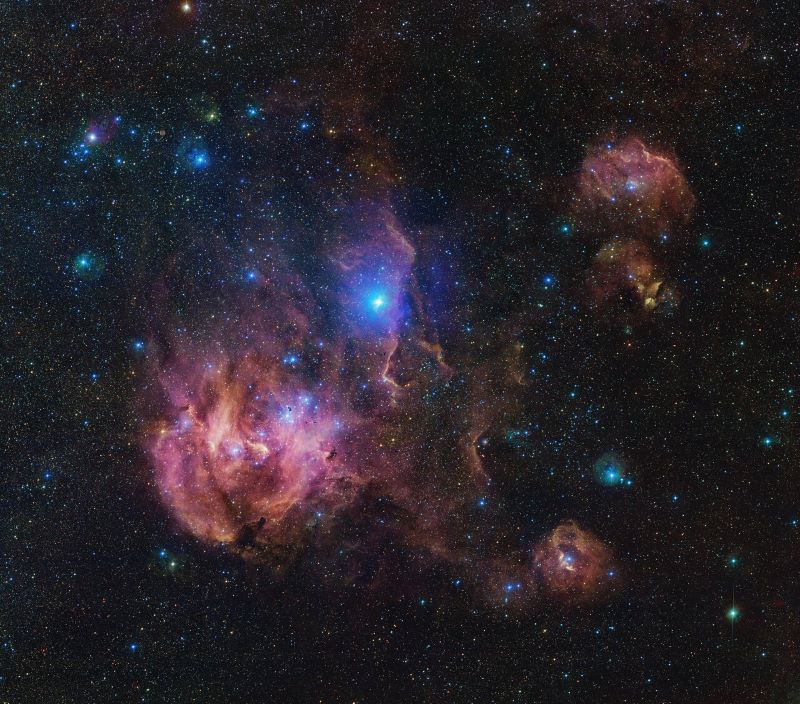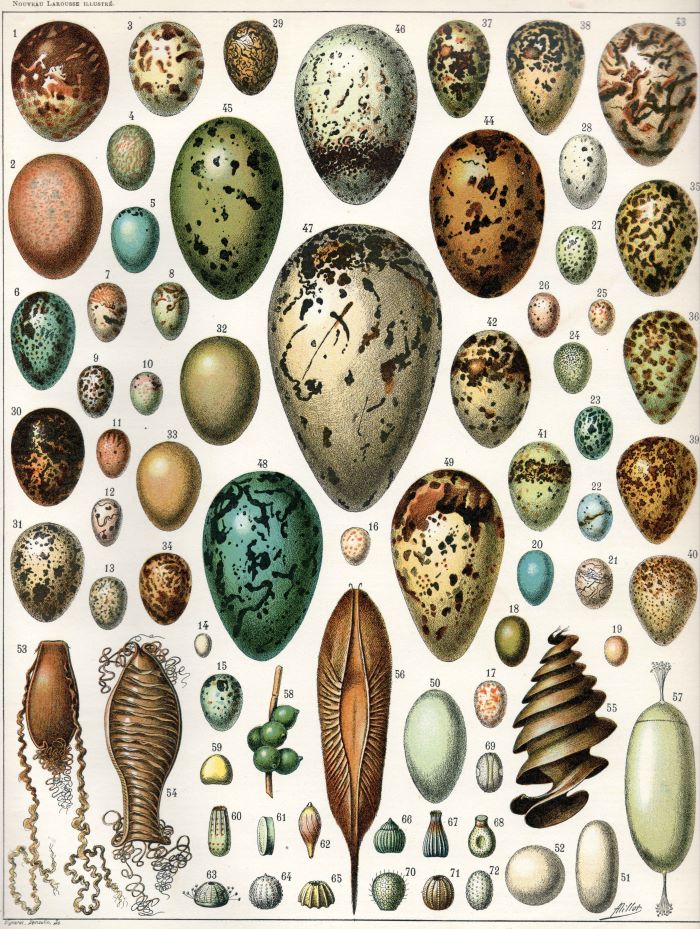April 1, 2024
World Record: Tiniest Egg Ever
ISTA researchers create smallest egg in history – and lose it
Breakthrough in reproductive biology: using methods of nanotechnology and genetics, an interdisciplinary research team at the Institute of Science and Technology Austria (ISTA) has produced the world’s tiniest egg. The pioneering achievement measures less than a micrometer and answers unsolved questions in embryology. Shortly before publication in specialist journals, however, the nano-egg was lost.
Teams led by Anna Kicheva and Carl-Philipp Heisenberg have been researching the early embryonic stage of zebrafish for years. The fish measure barely four centimeters, their eggs are only 0.7 mm in size. “It was the interdisciplinary exchange at the Institute that raised a simple but fundamental question,” says Professor Sylvia Cremer, who can also report on eggs less than one millimeter in size from her work with ants. “What actually is an egg – and how small can it be?” The question turned out to be almost unanswerable and retained its opacity, which soon became known as Heisenberg’s uncertainty.

“That’s why we egged the in-house nanofabrication and electron microscopy facilities on creating the tiniest ovum ever!” recounts cell biologist Calin Guet the biosynthetic approach. After years of laboratory work and 72 PhD students in burnout, the researchers were about to publish their monovular twin publication in both the journals Nature and Science: the smallest egg in history is oval and its volume is five quadrillionth of a chicken egg. “It would take 5,000,000,000,000,000 such nano-eggs for a customary scrambled eggs,” calculates Martin Rinder from the ISTA Cafeteria. At 314 nanometers long and 271 wide, it is smaller than the wavelength of visible light and can only be seen with the high-resolution imaging from the Danzl Group.
President Martin Hetzer of ISTA applauds the “eggcellent teamwork.” Hailed as a triumph for nanotechnology and genetics, the eggstraordinary creation has already sparked a frenzy of excitement within the communities. However, in the midst of the celebrations, things took an unexpected turn – the tiny egg suddenly disappeared.
A small egg for a chicken – a big loss for humanity
“Despite the high-security storage, theft cannot be ruled out,” says Georgios Katsaros, nanoelectronics professor and Vice President for Scientific Resources. The police are investigating. In the meantime, the campus community is walking on eggshells so as not to break the scientific breakthrough of the century with a rash move.
Since the Institute already achieved success in 2021 with a search team of specialists, one was also convened in this incident. Biologist Nick Barton in the briefing: “The egg, as a dormant stage of the organism, has no external limbs or fins, mouthparts or sensory organs. Therefore, an independent escape can be ruled out.” The search then began – the first ISTA Egg Hunt – across campus, with a wide variety of approaches pursued in order to “not put all eggs in the same basket.”

Professor Onur Hosten is brooding over his early quantum sensors. Based on the Hausel Group’s field theory eggquations, he describes the object as a quantum egg that annihilated with its anti-egg – a fundamental egg that mirrors the original like one egg does the other but with the opposite curvature.
The three astro superstars Bugnet, Götberg, and Matthee approach the challenge from another extreme. “If an egg has been laid, a hen is clucking somewhere,” quotes Bugnet a French proverb. They therefore consult the Running Chicken Nebula. Award-winning algorithmist Monika Henzinger is developing computational simulations to better predict the non-linear rolling motion of nano-eggs. And even the ISTA Library has joined the task force. Library director Patrick Danowski: “We are currently eggscavating early almanacs from the Klosterneuburg Abbey and Grafenegg collection to study lost eggs in Lower Austrian folklore.”

One egg short of a flock
After a week of unsuccessful searching, stochastics expert Jan Maas determined that the probability of finding the egg had fallen towards zero, commenting: “But who am I to teach experimentalists suck eggs?” He is an expert in random processes and is never short of sharing a random fact. “The eggs of sponges and cnidarians are only 50 micrometers in size,” he announces and continues, “The largest natural egg is not from dinosaurs, but from the extinct elephant bird (Aepyornis maximus) and is 34 cm long. Its capacity is nine liters.”
The solution finally turned out to be an Egg of Columbus: to the great shock of evolutionary biologist Lora Sweeney, a nano-chickling jumped into her microscope image. That very night, she was awarded an ERC Egg-celerator Grant to investigate the question “Which came first: The tiniest egg or the tiniest chicken?”

“Since then, we have been measuring about two nano-chicks per week during microscopy,” explains Senior Staff Scientist Robert Hauschild from ISTA’s Imaging & Optics Facility. “For lack of a better eggsplanation, it must be some kind of self-organization of protein systems,” says Martin Loose, shrugging his shoulders on behalf of a clueless scientific community. Chemist Rafal Klajn, in agreement with Sustainability Manager Jeroen Dobbelaere, has provided so-called nano confinements to isolate the tiny chickens in a species-appropriate manner.
The Institute’s outreach branch, VISTA Science Experiences, has now submitted ideas to the province of Lower Austria for an addition to the 2036 expansion masterplan. A nano petting zoo is envisioned. Constructions & Maintenance corrected the error, as no additional space is required: The petting zoo will fit neatly into any wallet.
If you enjoyed this text, follow our channels for more entertaining science content. If you believed it, however, please consider joining our Fakebusters Bootcamps and other fake debunking programs offered by VISTA Science Experiences.



